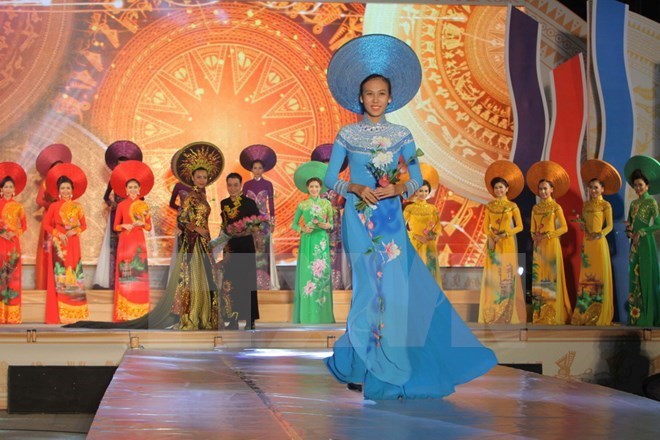
Argentina’s Diplomatics News Network has published an article by Mirta Ayala, on "ao dai”, the Vietnamese traditional costume for men and women.

Illustrative image (Source: VNA)
In her article, Mirta wrote
that unlike the the Japanese kimono or Korean Hanbok, the Vietnamese ao dai is
worn on various occasions such as weddings, lunar new year and international
events as Vietnam’s national costume. It is also used in schools and offices as
uniform.
Most Vietnamese women wear ao
dai for the national costume event in beauty competitions, she added.
While men wear a loose ao
dai, women choose tight-fitting ones which highlight their curves, the author
wrote, adding that ao dai goes with comfortable, loose-fitting pants.
Ao dai is made from silk and
decorated with different embroidered patterns and often goes with "non la”
(palm-leaf conical hat) or turban, traditional Vietnamese accessories for men
and women, the author wrote.-
Source: VNA
With an increasingly vibrant and widespread emulation movement aimed at building cultured residential areas and cultured families, Yen Thuy District has been making steady progress toward improving both the material and spiritual well-being of its people, while fostering a civilized, prosperous, beautiful, and progressive community.
Once lacking recreational spaces and community facilities, Residential Group 2 in Quynh Lam Ward (Hoa Binh City) has recently received attention for the construction of a new, spacious, and fully equipped cultural house. The project followed the model of state support combined with public contributions in both labor and funding.
The "All people unite to build cultural life" movement, which has been effectively integrated with Kim Boi district’s socio-economic development goals, is fostering a lively spirit of emulation across local residential areas, hamlets, villages, public agencies, and enterprises. In addition, through the initiative, traditional cultural values are being preserved and promoted, while community solidarity and mutual support in poverty reduction and economic development are being strengthened.
A working delegation of the Hoa Binh provincial People’s Committee led by its Permanent Vice Chairman Nguyen Van Toan on June 11 inspected the progress of a project to build the Mo Muong Cultural Heritage Conservation Space linked to tourism services in Hop Phong commune, Cao Phong district.
Born and growing in the heroic land of Muong Dong, Dinh Thi Kieu Dung, a resident in Bo town of Kim Boi district, in her childhood was nurtured by the sweet lullabies of her grandmother and mother. These melodies deeply imprinted on her soul, becoming an inseparable part of her love for her ethnic group's culture. For over 20 years, this love for her hometown has driven Dung to research, collect, and pass down the cultural values of the Muong people to future generations.
In the final days of May, the Ethnic Art Troupe of Hoa Binh Province organized performances to serve the people in remote, mountainous, and particularly disadvantaged areas within the province. These were not just ordinary artistic shows, but they were the meaningful journeys aimed at spreading cultural values, enhancing the spiritual life of the people and contributing to the preservation of ethnic minority cultural identities.



